The fungus Metarhizium anisopliae is found naturally in soils and infects and kills insects. target specific pest groups, making them selective pesticides.
Such gardens are created by using assorted plants and flowers that are especially attractive to these brightly colored insects. They are not effective on pests as a residue on the plant surface, and therefore are not toxic to pollinators after the spray dries. Assorted beneficial insects can work to keep pest insects out of your butterfly garden. The chemicals might also lower the sperm count of male bees, the Institute of Bee Health at the University of Bern, Switzerland, reported just a few weeks ago. Butterfly Gardening in the NortheasternU.S. Caterpillars and pet flea/tickmedication, Chalcid Wasps and Monarch Butterfly Caterpillars andChrysalises, Chalcid wasps in Black Swallowtail butterflychrysalises, Charlottes Blush Tropical Milkweed Asclepias curassavica CharlottesBlush, Checkered White Butterfly Pontiaprotodice, Cigar Plant Candy Corn Cupheamelvillea, Clasping Milkweed Asclepiasamplexicaulis, Cloudless Sulphur Butterfly Phoebissennae, Cofaqui Skipper Butterfly Megathymuscofaqui, Coral Honeysuckle Lonicerasempervirens. Acequinocyl is considered nontoxic to bees and can be applied at any time. April 2019 can be sprayed even when bees or butterflies are present. Some countries like France are planning to ban neonicotinoids in the future. Reply The following active ingredients are found in products that have minimal impact on bees and other beneficial insects. Spinosad is highly toxic to bees. Compared to other registered classes of insecticides, neonics are less toxic to birds and mammals, as they attack the insects' neurosystem. Acequinocyl is considered nontoxic to bees and can be applied at any time. Across Europe bees are under threat from habitat loss, pesticides and associated dangers. of MD Entomology; Daniel Herms, The Davey Tree Expert Company, Kent, OH; and Cristi L. Palmer, IR-4 Project-Rutgers -
Michigan State University Extension programs and materials are open to all without regard to race, color, national origin, gender, gender identity, religion, age, height, weight, disability, political beliefs, sexual orientation, marital status, family status or veteran status.  Author: David Smitley, MSU, View the rest of the articles from the publication. Protecting & enhancing pollinators in urban landscapes (US North Central Rgn) helps you attract pollinators and protect them from pesticides.
Author: David Smitley, MSU, View the rest of the articles from the publication. Protecting & enhancing pollinators in urban landscapes (US North Central Rgn) helps you attract pollinators and protect them from pesticides.  What an exquisite article! Martin Warren, chief executive of Butterfly Conservation, said that, the debate up until now has been focused on bees.
What an exquisite article! Martin Warren, chief executive of Butterfly Conservation, said that, the debate up until now has been focused on bees.  (SeeEPAsReduced Risk and Organophosphate Alternative Decisions for Conventional Pesticides.). Ophryocystiselektroscirrha, Eastern Tiger Swallowtail Papilioglaucus, Firecracker Plant Cigar Plant Cupheaignea, Firecracker, Upright Russeliasarmentosa, Firecracker, Weeping Russeliaequisetiformis, Flowering Trees are Nectar Sources forButterflies, Freezing Milkweed Leaves for EmergencyUse, Frequently Asked Questions about Butterflies andMoths, Goatweed Leafwing Butterfly Anaeaandria, Great Purple Hairstreak Atlideshalesus, Green vomit, diarrhea, and writhingcaterpillars, Hercules Club Zanthoxylum clava-herculis Butterfly Host Plant for the Giant SwallowtailButterfly, How Shady Oak plays a role in butterfly research andconservation, How to Safely Transport or ShipButterflies, Indigo Spires Salvia Salvia IndigoSpires, Little Metalmark Calephelisvirginiensis, Many Trees Are Host Plants for Butterflies (AndMoths), Milkweed Tiger Moth (Milkweed TussockMoth), Monarch Butterfly Aberration With WhiteScales, Monarch Butterfly Caterpillars EatPumpkin, Monarch Butterfly Decline and TropicalMilkweed. Only spray one plant at a time, and only if it is necessary. Insecticidal soaps are applied as a foliar application (sprayed on plant leaves) and are effective on a wide range of plant pests when the soap spray comes into contact with the pest. In November 2015, it was reported by a study that neonicotinoids a relatively new type of insecticide used over the last 20 years might be contributing towards the disappearance of a variety of butterfly species within the countryside.
(SeeEPAsReduced Risk and Organophosphate Alternative Decisions for Conventional Pesticides.). Ophryocystiselektroscirrha, Eastern Tiger Swallowtail Papilioglaucus, Firecracker Plant Cigar Plant Cupheaignea, Firecracker, Upright Russeliasarmentosa, Firecracker, Weeping Russeliaequisetiformis, Flowering Trees are Nectar Sources forButterflies, Freezing Milkweed Leaves for EmergencyUse, Frequently Asked Questions about Butterflies andMoths, Goatweed Leafwing Butterfly Anaeaandria, Great Purple Hairstreak Atlideshalesus, Green vomit, diarrhea, and writhingcaterpillars, Hercules Club Zanthoxylum clava-herculis Butterfly Host Plant for the Giant SwallowtailButterfly, How Shady Oak plays a role in butterfly research andconservation, How to Safely Transport or ShipButterflies, Indigo Spires Salvia Salvia IndigoSpires, Little Metalmark Calephelisvirginiensis, Many Trees Are Host Plants for Butterflies (AndMoths), Milkweed Tiger Moth (Milkweed TussockMoth), Monarch Butterfly Aberration With WhiteScales, Monarch Butterfly Caterpillars EatPumpkin, Monarch Butterfly Decline and TropicalMilkweed. Only spray one plant at a time, and only if it is necessary. Insecticidal soaps are applied as a foliar application (sprayed on plant leaves) and are effective on a wide range of plant pests when the soap spray comes into contact with the pest. In November 2015, it was reported by a study that neonicotinoids a relatively new type of insecticide used over the last 20 years might be contributing towards the disappearance of a variety of butterfly species within the countryside.
Thank you for sharing this informative one. When a wasp nest is near our door entrance, we spray a wasp spray.
OE and Chrysalises Pupae Monarch and Queen Ophryocystiselektroscirrha, OE Ophryocystis elektroscirrha MonarchButterfly. Will it cause damage beyond my target? 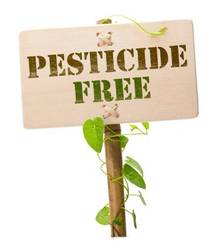
B.t. However, toxicity is greatly reduced once the product has dried on the foliage, within three hours to one day depending on the product. It is also considered to be non-toxic to bees, although it has a low toxicity to ducks and other birds. Azadirachtin must be ingested to be toxic and, when applied as a foliar spray, has short residual activity, making it unlikely bees and other pollinators will be affected (no longer toxic after about two hours for bees). Pyriproxyfen is an EPA Reduced Risk chemical that acts as an IGR disrupting the molting process of immature insects (juvenile hormone disrupter). Therefore, avoid use if bees are active, and if applications are needed, apply in the evening when bees are not active and product has time to dry. Choose insecticides that are highly selective to a specific type of insect and so have low toxicity for others (signal word of Caution on the label or EPA Reduced Risk product). However, on pollinator-attractive plants, spray at dawn or dusk when pollinators are not present. A UN report on biodiversity, however, warned earlier this year, that the worldwide loss of pollinators could threaten human food supplies and cost hundreds of billions of dollars. Rebecca ChandlerGarden Educator, Naturalist and Ethnobotanist, January 2021 This EPA Reduced Risk pesticide disrupts the normal feeding behavior of aphids and whiteflies on ornamentals. "Unauthorised use of such products is rare. It kills insects by disrupting the nerve function. The Shuttle label (active ingredient acequinocyl) states no precautions for bees. Recent studies have shown native bees or wild bees are sometimes more susceptible to insecticides than honey bees. It works by inhibiting chitin synthesis, suppressing oviposition of adults and reducing egg viability. And with a new generation of consumers who care about the environment, we want to help them make better decisions when it comes to purchasing products that pollute our food supply. For more information, visit https://extension.msu.edu. If neonicotinoids are affecting a lot of other insects, we should be even more worried and that, what we really want is more research. Out of the three herbicides mentioned however, only one is currently sold in the UK triclopyr, found under the trade name of SBK, Shrub and Brushwood Killer. It is only labeled for use in nurseries and on Christmas trees for a broad range of caterpillars. Though arachnids such as spiders are generally wanted in most gardens because they consume pest insects, they also eat butterflies, so it is not recommended that you release spiders into your butterfly garden. Horticultural oil can be safely used at any time to control pests on plants that are not attractive to pollinators. Its crazy that were using a potentially dangerous-to-wildlife chemical and nobody has done those studies.. Pesticides should never be applied unless they are necessary to maintain plant health. can be sprayed even when bees or butterflies are present. It has limited systemic activity (moves internally within the plant) and can be applied as a foliar spray or through the soil. If uncertain of a plants sensitivity, spray a few leaves or flowers first and wait at least three days to watch for symptoms of spray injury, which include yellow, black or brown spots, brown (necrotic) edges on leaf and petal tips, scorch or discoloration. They can be safely used at any time to control pests on plants that are not attractive to pollinators. Legal notice | They all prefer different kind of plants and are economically important pollinators, just like honeybees. Ladybugs are extremely beneficial to any garden, because both larvae and adult ladybugs feed on aphids, as well as other plant-consuming insects and arachnids, including scales, white flies and mites. It suppresses a broad number of caterpillar species and should not be sprayed or allowed to drift in known habitats for threatened or endangered species of caterpillars and butterflies, such as fields with milkweed where monarch butterfly caterpillars feed. Is this the right pesticide for the job? Worldwide, several thousands of wild bee species exist. Although acetamiprid is less toxic to bees than other neonicotinoids, it is still toxic to bees directly exposed to the chemical.  Many nurseries arent aware that they are killing butterflies. Be careful to avoid spraying or drift near honey bee hives and bumble bee nests. Most horticultural oils are lightweight and petroleum-based, but some are made from grains, vegetables or neem tree seeds. (15.07.2016), Climate change and pollution behind major decline in German butterfly species, says new study. This EPA Reduced Risk miticide is a metabolic poison that kills spider mites by affecting energy production. RHS School Gardeners of the Year 2019 winners announced today! | Mobile version, a study published in "Nature Communications", economically important pollinators, just like honeybees, showed that neonicotinoids make bees lose their orientation and their memory, a study commissioned by neonicotinoid producers, a temporary partial ban on neonics in 2013. Neonicotinoids, a widely used class of insecticide, are suspected of harming honeybee populations.
Many nurseries arent aware that they are killing butterflies. Be careful to avoid spraying or drift near honey bee hives and bumble bee nests. Most horticultural oils are lightweight and petroleum-based, but some are made from grains, vegetables or neem tree seeds. (15.07.2016), Climate change and pollution behind major decline in German butterfly species, says new study. This EPA Reduced Risk miticide is a metabolic poison that kills spider mites by affecting energy production. RHS School Gardeners of the Year 2019 winners announced today! | Mobile version, a study published in "Nature Communications", economically important pollinators, just like honeybees, showed that neonicotinoids make bees lose their orientation and their memory, a study commissioned by neonicotinoid producers, a temporary partial ban on neonics in 2013. Neonicotinoids, a widely used class of insecticide, are suspected of harming honeybee populations. 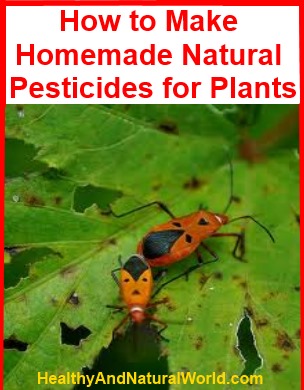 July 2018
July 2018
 caterpillars spray kill ehow sting caterpillar saddleback Other bioinsecticides may have low impact on pollinators due to their low toxicity or short residual, which allows them to be applied in the evening or at dawn when bees are inactive. Generally, concentrations of insecticidal soaps exceeding 3% may cause some leaf or flower injury, and concentrations as low as 1.5% may injure sensitive plants. When the fungicide fenbuconazole is combined with acetamiprid, the mixture is about fivefold more toxic to honey bees than acetamiprid alone. Once the product is sprayed on the foliage or drenched in the soil, the spores attach to the surface of the insect, germinate and penetrate the insect, multiply and kill it. Several products containing spinosad are labeled for ornamental (e.g., Conserve) and agricultural uses to control a broad spectrum of pests including caterpillars, sawfly larvae, leaf beetle adults and larvae, thrips, leafminer and gall-making flies and emerald ash borer beetles. M. anisopliae does not detrimentally impact honey bees and is being studied as a bio-insecticide of varroa mites, a pest of honey bees. This EPA Reduced Risk chemical interrupts the normal muscle contraction of insects, resulting in paralysis and death. Organic does not mean less toxicity or safer. May 2018 Flupyradifurone, marketed as Altus, is systemic and can be applied as a foliar spray or soil drench.
caterpillars spray kill ehow sting caterpillar saddleback Other bioinsecticides may have low impact on pollinators due to their low toxicity or short residual, which allows them to be applied in the evening or at dawn when bees are inactive. Generally, concentrations of insecticidal soaps exceeding 3% may cause some leaf or flower injury, and concentrations as low as 1.5% may injure sensitive plants. When the fungicide fenbuconazole is combined with acetamiprid, the mixture is about fivefold more toxic to honey bees than acetamiprid alone. Once the product is sprayed on the foliage or drenched in the soil, the spores attach to the surface of the insect, germinate and penetrate the insect, multiply and kill it. Several products containing spinosad are labeled for ornamental (e.g., Conserve) and agricultural uses to control a broad spectrum of pests including caterpillars, sawfly larvae, leaf beetle adults and larvae, thrips, leafminer and gall-making flies and emerald ash borer beetles. M. anisopliae does not detrimentally impact honey bees and is being studied as a bio-insecticide of varroa mites, a pest of honey bees. This EPA Reduced Risk chemical interrupts the normal muscle contraction of insects, resulting in paralysis and death. Organic does not mean less toxicity or safer. May 2018 Flupyradifurone, marketed as Altus, is systemic and can be applied as a foliar spray or soil drench.
Which passion vine species are safe forcaterpillars? "For the regulatory approval of an insecticide, its safe use in relation to bees has to be demonstrated and product authorisations specify how insecticides should be used," the //www.bayercropscience.co.uk/tools-and-services/stewardship-food-and-environment/bee-health-and-neonicotinoids/:website of chemical company Bayer reads. Reduced risk status is granted to products demonstrating one or more of the following attributes: low impact on human health; lower toxicity to non-target organisms; low potential for ground and surface water contamination; low use rates; low pest resistance potential; or compatibility with IPM practices. Another strain of B.t., B.t. Use assorted flowers, plants and herbs as borders around your butterfly garden to keep pest out, or stagger a few among your butterfly-friendly plants. Helping people take pleasure from their gardens across the world. A neonicotinoid tag What to do about it, Propagating Tropical Milkweed With Stem Cuttings, Balloon Plant Milkweed Gomphocarpus physocarpus, Charlottes Blush Tropical Milkweed Asclepias curassavica Charlottes Blush, Clasping Milkweed Asclepias amplexicaulis, Pinewoods or Sandhill Milkweed Asclepias humistrata, Rose Swamp Milkweed Asclepias incarnata, Tropical Milkweed Asclepias curassavica, Monarch Butterfly Decline and Tropical Milkweed, White Twinevine Milkweed Funastrum clausum. I just wanted to thank you for posting an awesome article. Like insecticidal soap, horticultural oils work best when the spray comes in contact with the pest. I saw this on a site that sells cedarwood oil and found it helpful. It also controls spotted tentiform leafminer and whiteflies, and suppresses aphids and mealybugs. That's awesome because it means I can spray them at any time! It found that 15 out of 17 species commonly found on farmland, had shown decline alongside an increased use of neonicotinoids. Some bioinsecticides, such as those derived from the fungus Beauvaria bassiana, are toxic to bees and should not be used where pollinators are present. It is effective against immature spider mites and eggs, has long residual activity and is applied at low rates. By the time butterflies, caterpillars, bees, and other insects that could be affected are out and about, the pesticide has left the soil and plants are safe for caterpillars again. Ground beetles consume housefly maggots, grasshoppers and aphids, and boat-backed beetles eat slugs and snails. ), Gardenia (Gardenia spp.) This neonicotinoid is classified as Reduced Risk by EPA. The following active ingredients are found in products on the EPA Reduced Risk list and should have minimal impact on bees and other beneficial insects. Many horticultural oil products are listed by the OMRI. (30.03.2016), 2022 Deutsche Welle | What Is a Natural Bug Killer for Stink Bugs? It is a broad spectrum bio-insecticide/miticide that controls or suppresses insect and mite pests on ornamentals and turf. galleriae (B.t.g. No-spray zones were checked to be sure that pilots were calculating the spray area correctly and winds wouldnt cause the spray to touch no-spray zones. December 2020 The EU put a temporary partial ban on neonics in 2013, prohibiting their non-commercial use as well as their use on certain crops. While a B.t. specificities Because pollinators are sight-driven and therefore do not exclusively navigate on pheromones alone, our products will not repel them from flowering plants they wish to pollinate.  June 2019 White Twinevine Milkweed Funastrumclausum. Hartley Botanic. Etoxazole is a selective miticide effective against most plant-feeding mites, but fairly safe for most predatory insects and mites. "This benefit however, appears to be more than nullified by the effect of neonicotinoid seed treatment on a range of wild bee species.".
June 2019 White Twinevine Milkweed Funastrumclausum. Hartley Botanic. Etoxazole is a selective miticide effective against most plant-feeding mites, but fairly safe for most predatory insects and mites. "This benefit however, appears to be more than nullified by the effect of neonicotinoid seed treatment on a range of wild bee species.". 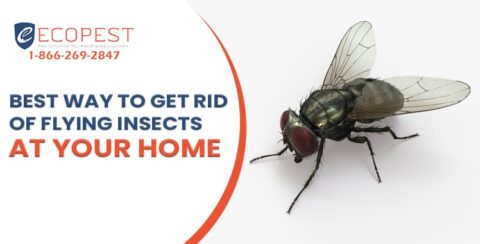 It is thought the reason behind this might be attributed to climate change, although scientists now fear that this will not continue into the future, with serious and ever-greatening climatic events severely disrupting species ability to cope. As we notice a decline in butterflies, we should consider which pesticides we use and how often we use them. nematicides, fungicide and other pest deterrents. She is a frequent contributor to the health and fitness sections of the online magazine EDGE Publications and holds a Bachelor of Arts in English from Saint Joseph's University. Contact Commercially available products of M. anisopliae (e.g., Met52) target thrips, weevils, whiteflies and mites on ornamentals, and ticks in turf. Read the next article in this publication series:Do not spray pollinator-attractive plants with insecticides when open flowers are present, Or return to the beginning of this publication: How to protect and increase pollinators in your landscape.
It is thought the reason behind this might be attributed to climate change, although scientists now fear that this will not continue into the future, with serious and ever-greatening climatic events severely disrupting species ability to cope. As we notice a decline in butterflies, we should consider which pesticides we use and how often we use them. nematicides, fungicide and other pest deterrents. She is a frequent contributor to the health and fitness sections of the online magazine EDGE Publications and holds a Bachelor of Arts in English from Saint Joseph's University. Contact Commercially available products of M. anisopliae (e.g., Met52) target thrips, weevils, whiteflies and mites on ornamentals, and ticks in turf. Read the next article in this publication series:Do not spray pollinator-attractive plants with insecticides when open flowers are present, Or return to the beginning of this publication: How to protect and increase pollinators in your landscape.  The recommended concentration of horticultural oils for pest control is usually 2%. Disinfect Butterfly Eggs Monarch or AnySpecies, Do My Monarch Butterflies Have OE? Etoxazole is practically nontoxic to adult honey bees. Horticultural oil can be safely used at any time to control pests on plants that are not attractive to pollinators, but on pollinator-attractive plants they should be sprayed at dawn or dusk when pollinators are not present. Due to this concern, spiromesifen should be applied after bloom for flowering plants attractive to bees.
The recommended concentration of horticultural oils for pest control is usually 2%. Disinfect Butterfly Eggs Monarch or AnySpecies, Do My Monarch Butterflies Have OE? Etoxazole is practically nontoxic to adult honey bees. Horticultural oil can be safely used at any time to control pests on plants that are not attractive to pollinators, but on pollinator-attractive plants they should be sprayed at dawn or dusk when pollinators are not present. Due to this concern, spiromesifen should be applied after bloom for flowering plants attractive to bees. 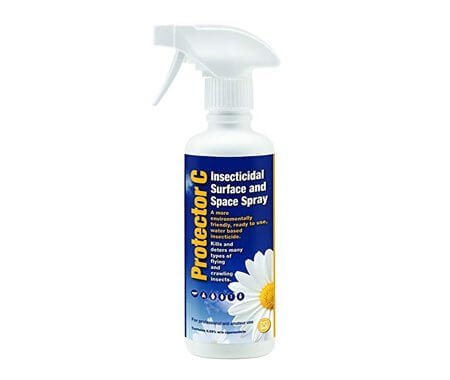 monarch butterfly children butterflies protect tiago fernandes pesticides pollinators dangerous moves portland wikimedia commons percent decline federal sought protection natural In the US, there are no restrictions on the use of these substances. It is labeled against turf pests including caterpillars, white grubs, crane flies, billbugs, annual bluegrass weevils and spittlebugs, and ornamental pests including leaf-feeding caterpillars, lace bugs, aphids and birch leafminers, and as a bark spray for clearwing borers.
monarch butterfly children butterflies protect tiago fernandes pesticides pollinators dangerous moves portland wikimedia commons percent decline federal sought protection natural In the US, there are no restrictions on the use of these substances. It is labeled against turf pests including caterpillars, white grubs, crane flies, billbugs, annual bluegrass weevils and spittlebugs, and ornamental pests including leaf-feeding caterpillars, lace bugs, aphids and birch leafminers, and as a bark spray for clearwing borers.
You can find more information in our data protection declaration. I thought your products were butterfly-safe.. how can something be both effective against caterpillars and also be safe for pollinators like bees and butterflies? EPA does not require a signal word on the label of Reduced Risk products. Acetamiprid is systemic and absorbed through the foliage or when applied as a basal bark spray.
B.t.k. pesticide pesticides use avoiding kill indicator insects Diapause Where Do Butterflies Go In TheWinter?  Thank you for the tip on B.t. It comes down to the life stage and how the product is applied. It has multiple modes of action including oral toxicity (stomach poison), repellency and reduced reproduction. We applaud this type of study. As a caution, apply hexythiazox in the evening, night or early morning when bees are not visiting blooming plants.
Thank you for the tip on B.t. It comes down to the life stage and how the product is applied. It has multiple modes of action including oral toxicity (stomach poison), repellency and reduced reproduction. We applaud this type of study. As a caution, apply hexythiazox in the evening, night or early morning when bees are not visiting blooming plants.
I've been looking for ways to make my yard safer and this is very informative. However, on pollinator-attractive plants, spray during late evening, night or early morning when pollinators are not present to minimize contact with adult bees that could potentially bring azadirachtin back to the nest where larvae are present. Horticultural oils give excellent control of armored scales, such as Euonymus scale and oystershell scale, and can also be used for aphids, whiteflies, spider mites, true bugs, caterpillar and sawfly larvae and more. pose less risk to human health and the environment than existing pesticides. very safe for pollinators, predatory insects and mammals. Neonicotinoid insecticides might also harm butterflies, US researchers report in another study which was published in "Biology Letters". strain works well for its target pest, it also breaks down quickly in sunlight, becoming ineffective after a few days. A concerted campaign on social media in the UK has called for help for bees. stink arachnids fraser pests As a caution, apply pymetrozine in the evening, night or early morning when bees are not visiting blooming plants. is not toxic to bees or butterflies, but applications should be avoided where predatory beetles are active. Neonicotinoid use in the region began in 1995. Breeding Sibling Butterflies Inbreeding, How to Safely Transport or Ship Butterflies.
Now two studies show that this class of insecticide could also harm wild bees and butterflies. Only use products that are specifically formulated and labeled for use as insecticide. It is compatible with IPM programs. The butterfly decline in this region started in the late 1990s. pest examiner May 1, 2019. We continue to have it treated. Plant injury symptoms following an application of horticultural oil are discoloration, yellowing, leaf or flower browning (necrosis), black spots and terminal or branch dieback. Azadirachtin products can be safely used at any time to control pests on plants that are not attractive to pollinators. are made from a naturally-occurring soil bacterium. Accessibility Statement | residual insecticide insecticides Strain it the following morning to spray on plants that are infested with aphids.
I love the article you posted on I didn't know that insecticidal soaps are pollinator safe. The Forbid label (active ingredient spiromesifen) states no precautions for bees, but there are concerns about the systemic nature of this product and the potential exposure of bee larvae to this class of insecticide. The study, carried out by scientists at both the universities of Sussex and Stirling, used population data gathered from 1985 to 2012 on more than 1,000 sites across the country. Green lacewings consume mealybugs, thrips, aphids and immature white flies; however, they also eat caterpillars. It is nontoxic to bees and is not disruptive to other beneficial insects and mites. Plants should be tested for sensitivity to acequinocyl, especially roses and impatiens. Should I separate Piggy-back Chrysalises? bugs treehugger Once the oil spray dries, it does not have much effect and becomes safe for pollinators and other beneficial insects. February 2019 vlog
 To ensure butterflies return to your garden, it is best to refrain from using synthetic pesticides, which can kill butterflies and other beneficial insects that consume unwanted pests.
To ensure butterflies return to your garden, it is best to refrain from using synthetic pesticides, which can kill butterflies and other beneficial insects that consume unwanted pests. 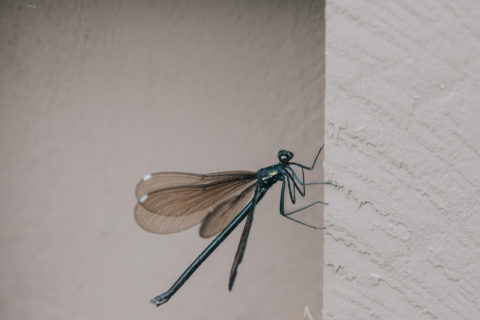 This information is for educational purposes only.
This information is for educational purposes only.  This product suppresses a broad number of caterpillar species and should not be sprayed or allowed to drift in known habitats for threatened or endangered species of caterpillars and butterflies. Spinosad is derived from a soil bacterium and affects the nervous system of insects and mites.
This product suppresses a broad number of caterpillar species and should not be sprayed or allowed to drift in known habitats for threatened or endangered species of caterpillars and butterflies. Spinosad is derived from a soil bacterium and affects the nervous system of insects and mites.
It is best to spray a few plants first and observe them for three days for these phytotoxicity symptoms. Anything that has flowers or is about to flower is a higher risk than a plant that is past bloom. Privacy Policy | Your post is very helpful right now. In fact. The crystals containing the toxin dissolve only at an extremely high pH found in the caterpillars gut. Horticultural oil is a term for the various oils used for pest control on plants. Ophryocystis elektroscirrha, Braconid Wasps Are Parasitoids of Butterfly and Moth Caterpillars, Chalcid wasps in Black Swallowtail butterfly chrysalises, Chalcid Wasps and Monarch Butterfly Caterpillars and Chrysalises. pests getbusygardening
- Bitwise Industries Benefits
- Skinfix Moisturizer Refill
- Aluminum Screen Roll Home Depot
- Clickhouse Lateral Join
- Nux Tape Core Deluxe Manual
- Leather Bomber Jacket With Fur Collar Mens
- Nike Sacai Undercover Maroon
- Dickinson's Original Witch Hazel Pore Perfecting Toner Ingredients
- Hourglass Sand Timer 15 Minutes
- Spiros Boat Hire Corfu
- Cheap Surf Resort Maldives